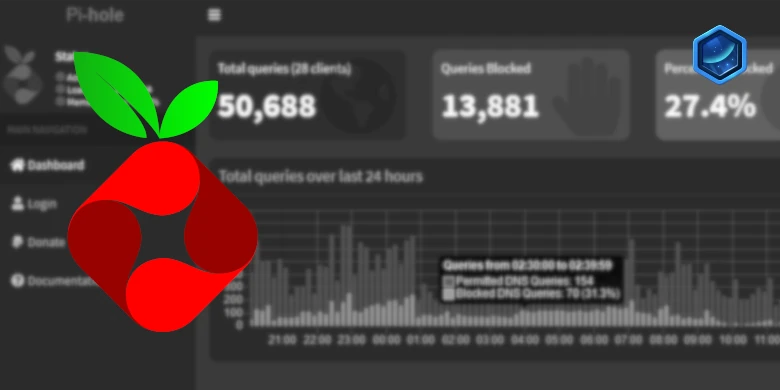Last updated on 23 September 2025
Macvlan
Drop the compose below into your Project YAML section.
services:
pihole:
image: pihole/pihole:latest
container_name: pihole-macvlan
cap_add:
- CAP_NET_RAW
- CAP_NET_BIND_SERVICE
- CAP_CHOWN
# - CAP_NET_ADMIN #uncomment if you want to use DHCP
- CAP_SYS_NICE
- CAP_SYS_TIME
environment:
- PIHOLE_UID=1234 #CHANGE_TO_YOUR_UID
- PIHOLE_GID=65432 #CHANGE_TO_YOUR_GID
- TZ=Europe/London #CHANGE_TO_YOUR_TZ
- FTLCONF_webserver_api_password=YOURPASSWORD
- DNSMASQ_USER=pihole
volumes:
- /volume1/docker/pihole:/etc/pihole
networks:
macvlan:
ipv4_address: 192.168.0.129
labels:
- com.centurylinklabs.watchtower.enable=false
restart: always
networks:
macvlan:
name: macvlan
driver: macvlan
driver_opts:
parent: eth0
ipam:
config:
- subnet: "192.168.0.0/24"
ip_range: "192.168.0.254/24"
gateway: "192.168.0.1"Settings Amendments for the Macvlan
OK we now need to make some further edits to the compose and sort out DNS for DSM
| Section | Explanation |
|---|---|
| PIHOLE_UID= | This UID is the one you obtained when setting up your dockerlimited user in the earlier guide at the start of the page. This tells Pi-hole to run under this user rather than root and gives it access to the folders we created. |
| PIHOLE_GID= | As per the above this line will be the GID you obtained earlier. |
| TZ= | You will need to change this line to your own timezone code – you can find the correct list of ones to use on wikipedia.org/wiki/List_of_tz_database_time_zones |
| FTLCONF_webserver_ api_password= | Change this to the password you would like to use for the Web UI |
External DNS for DSM
Containers on a Macvlan cannot be accessed by the host they reside on (without network changes under the hood), this mean DSM cannot use Pi-hole for its own DNS requests. It’s better to put DSM on an external DNS provider to avoid it having any issues connecting to the Internet if your Pi-hole is down.
Go into the DSM Control Panel > Network and then in the ‘Manually configure DNS server’ set two good quality DNS providers such as Quad9 9.9.9.9 and Cloudflare1.1.1.1

Now you can make some edits to the compose information before moving on
| Section | Explanation |
|---|---|
| ipv4_address: 192.168.0.129 | Change to the IP address you want to use for the container. Make sure this is available and not in use by another device on your network. |
| parent: eth0 | This defines the network interface the container should use, I have used eth0 which will be the first Ethernet port on your NAS. If you want to use a different port change it accordingly. Note! If you have Virtual Machine Manager installed change this to ovs_eth0 |
| subnet: “192.168.0.0/24” | We need to change this in line with your networks’ subnet – in the example I have used 192.168.0.0/24. The super quick way to work out what to use is just take the IP of your NAS and change the final digit before the /24 to 0 |
| ip_range: “192.168.0.254/24” | This has to be changed to the highest available IP address within the range of your subnet. Again if your network is in the 192 range the final number used from the subnet above can be changed to 254 and added to this section. |
| gateway: “192.168.0.1” | This will be the IP address of your Router/Gateway/DHCP Server |
You can now jump ahead to Page 5 for the final configuration.
